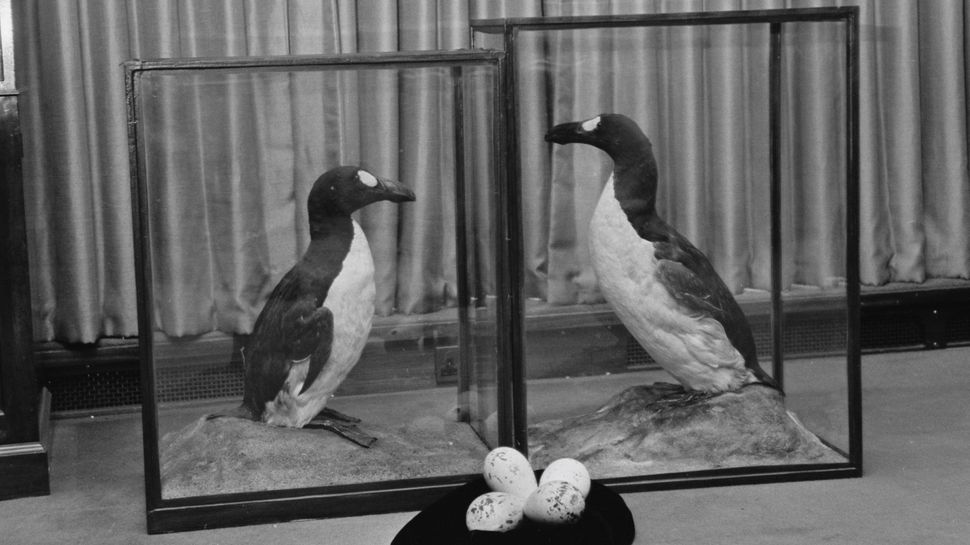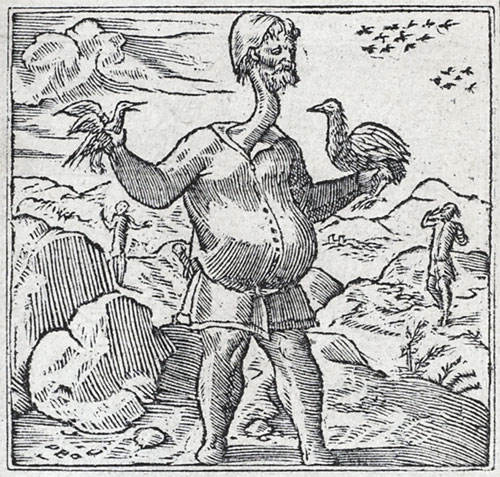'It was clearly a human assault on the species': The fate of the great auk [View all]
By Alexander McNamara
published 1 hour ago
Author and professor Gísli Pálsson details the final years of the North Atlantic flightless birds that were driven to extinction by humans — an event that caused a moment of realization about humanity's destructive powers.

black and white photo showing two great auks in museum display cabinets with eggs placed on a black cushion
Two preserved great auk specimens displayed at a museum in 1971. The last pair of great auks were killed in 1844. (Image credit: Evening Standard/Getty Images)
Great auks (Pinguinus impennis) were large flightless birds that thrived on rocky islands in the North Atlantic for thousands of years. However, humans hunted them to extinction within just a few hundred years, targeting the auks for their feathers, fat, meat and oil. The last breeding pair was killed by a fisher off the coast of Iceland in 1844, and the last sighting — of a single male, and potentially the last of its species — was off the Newfoundland Banks in 1852.
Alexander McNamara: What is a great auk, and what happened to it?
Gísli Pálsson: The great auk was a tall bird — 80 centimeters [31 inches] and quite thick with lots of meat — and it was flightless so would nest on skerries [small rocky islands] where it could climb up. [It lived] In various spots along the North Atlantic and in North America, and humans exploited it for millennia — the oldest images we have [are] from a cave in France, close to Marseille from 27,000 years ago. The biggest colony was probably in Newfoundland and Indigenous groups in North America hunted it for quite a long time. We have early anthropological reports and archaeological evidence, but this was largely for religious events, and symbolism, [for example] the Beothuk [Indigenous people] captured eggs and used them in rituals.
The great auk was hunted in the Scottish Isles, Norway, Iceland and some other places — but the major slaughterhouse of the great auks was in Newfoundland. It was European sailors, French and Portuguese, in the 16th and 17th centuries. They would hunt great auks in their thousands, decimating the local stock. At the same time, they would kill the Beothuk, and so this was genocide plus near extinction of the great auks. The European sailors were there to catch fish, but they needed food on the way back, so would fill their boats with great auk, salt the meat and sail on to Europe. Some of my colleagues have [said] this was the first fast food stop in the world.
In his new book, "The Last of Its Kind: The Search for the Great Auk and the Discovery of Extinction" (Princeton University Press, 2024), anthropologist Gísli Pálsson recounts the final years of the great auk, using accounts and interviews from Victorian ornithologists John Wolley and Alfred Newton, who realized that species extinction was not something confined to the past but a tangible process that humans can cause.
In an interview with Live Science, Pálsson discusses the background to the book, the lasting legacy of the great auks' demise and whether the species could or should be resurrected.
More:
https://www.livescience.com/animals/extinct-species/it-was-clearly-a-human-assault-on-the-species-the-fate-of-the-great-auk

What else can I eat?????

